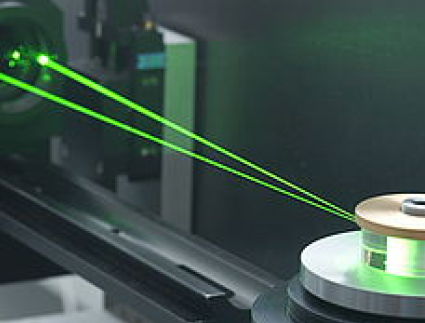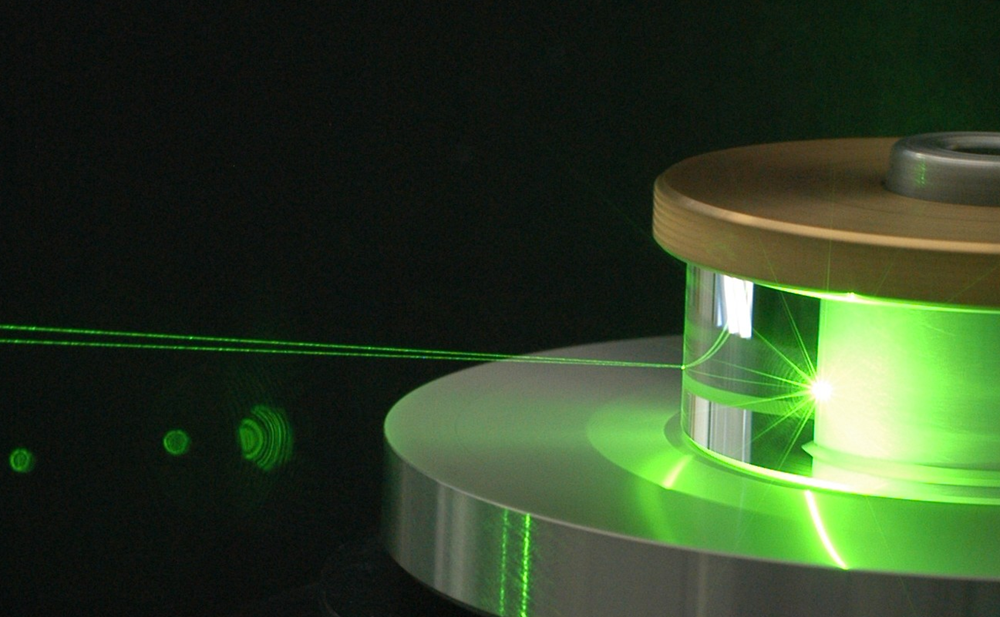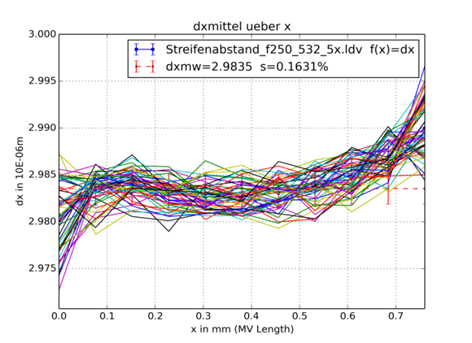LDV
Turntable Velocity Standard
The calibration of the ILA LDV Systems is done by measuring the mean interference fringe distance in the measurement volume at the German National Metrology Institute (PTB-Braunschweig), which issues an official calibration certificate as accredited laboratory.
As an alternative, the mean interference fringe distance measuring is also done with the ILA Turntable Velocity Standard. The ILA-Standard has been developed in collaboration with PTB Braunschweig. The uncertainty of the ILA-Standard is between 0,05 % and 0,1 % depending of the chosen turntable components and according to the PTB Braunschweig laboratory report.
The theoretical fringe distance can be calculated easily with the laser wavelength and the angle between the laser beams. But the actual fringe distance may deviate due to a multitude of influencing factors in the assembly of the probe. Therefore it has to be calibrated. The ILA Turntable System calculates the surface velocity of the rotating glass cylinder with counted impulses, measured time and the exact known radius of the glass cylinder (Fig. 2). With these data the velocity of particles sticking on the surface of the glass cylinder can be calculated and compared to the measured velocity of the LDV. The fringe distance is calculated by the measured Doppler-frequency and the measured particle velocity on the surface.
While the fringe distance is changing over the length of the measuring volume the probe can be moved by a traversing unit to measure the fringe distance on different positions inside the measuring volume (Fig. 3).

Fig. 1: ILA Turntable

Fig. 2: Calibration disc (glass cylinder)


